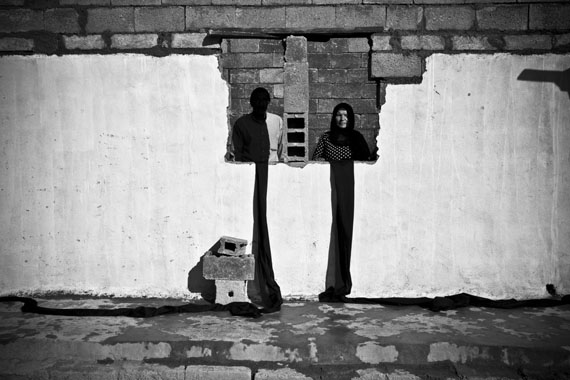
Invisible Beauty
Latif Al Ani » Akam Shex Hadi »
Exhibition: 9 May – 22 Nov 2015
Wed 6 May 18:00

RUYA commissioned Invisible Beauty, the exhibition for the Iraq Pavilion at the 56th Venice Biennale. Curated by Philippe Van Cauteren, Artistic Director of S.M.A.K., Ghent, Invisible Beauty features five contemporary artists from across Iraq and the diaspora: two generations of Iraqi photographers, in the shape of Latif Al Ani and Akam Shex Hadi, performance artist Rabab Ghazoul, ceramicist and sculptor Salam Atta Sabri and painter Haider Jabbar.
Invisible Beauty refers both to the unusual or unexpected subjects in the works that will be on display and to the invisibility of Iraqi artists on the international stage. The relationship of art to survival, record-keeping, therapy and beauty are among the themes raised by the exhibition. It reveals art generated by a country that has been subjected to war, genocide, violations of human rights and, in the last year, the rise of Isis.
The systematic demolition of the cultural heritage of Iraq by Isis, has made it more important than ever to focus on artists continuing to work in Iraq. Van Cauteren made his selection following a journey to Iraq that was organised and facilitated by RUYA and carried out in company with Tamara Chalabi, the Foundation’s Chair and Co-founder.
In addition, over 500 drawings made by refugees in northern Iraq will be on display. Working with RUYA, world renowned artist Ai Weiwei has selected a number of these drawings for a major publication, Traces of Survival that will launch at the Biennale. The exhibition includes a catalogue with original essays, poetry and short stories by Iraqi writers, reflecting on the theme of Invisible Beauty. It is published by Mousse.
Latif Al Ani (b. 1932) is considered the founding father of Iraqi photography and his extensive documentary career spans from the late 1950s to the late 1970s, when it became impossible to photograph in public due to the increasingly authoritarian atmosphere of the Saddam regime and the Iran-Iraq War. A duality of thinking makes both modernising trends and the retention of ancient traditions themes of Al Ani’s work and the Pavilion exhibition will focus on works from the early period of his career.
By contrast, Akam Shex Hadi (b. 1985) represents a later generation of Iraqi photography and his staged, symbolic works have seen him participate in photography festivals across Asia and the Middle East. His work, along with that of Haider Jabbar, is concerned with the rise of Isis and the refugee crisis. He has created a new work for the Pavilion that consists of 28 photographs. A recurrent motif in the series is an unwinding thread, which resembles a snake but is revealed to be the Isis flag, a continuous reminder of its ensnaring qualities. Shek Hadi will also present a series of aerial photographs depicting what appears to be a large floor clock, except that the digits are not in their expected positions. A prostrate figure representing a hand of the clock makes the works a rumination on human capitulation to time, a kind of momento mori.